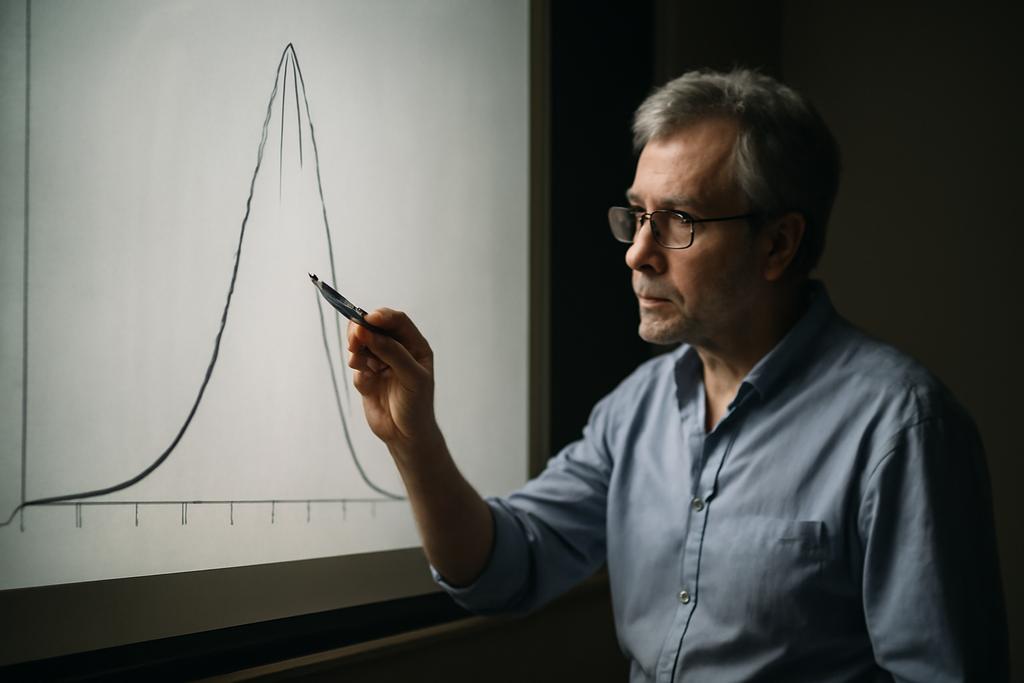In Cardiff University’s School of Mathematics, a quiet but consequential question about randomness has found its voice. Long-memory, or long-range dependence, is the stubborn cousin of ordinary randomness: correlations stretch on for long times, bending the usual rules of statistics. The Rosenblatt distribution, named after Murray Rosenblatt who studied related limit theorems, sits at the heart of these puzzles. It isn’t the familiar bell curve; it’s a non-Gaussian limit that shows up when you apply nonlinear functions to Gaussian data with long memory. Memory that refuses to forget isn’t a nuisance here; it’s a feature that demands new mathematics to understand.
Two researchers, Nikolai N. Leonenko and Andrey Pepelyshev, at Cardiff University’s School of Mathematics, have produced new ways to actually compute and simulate this distribution. Their work doesn’t merely polish a theoretical curiosity; it builds a practical toolkit for inference in fields as varied as economics, hydrology, climate science, and finance—places where memory matters and data refuse to behave like independent draws. The payoff is not a single formula but a workflow: turn the Rosenblatt variable into numbers you can simulate, estimate, and interpret, even when memory stretches the dependence far beyond the reach of Gaussian approximations.
At the center is a simple idea dressed in heavy math: the Rosenblatt variable V can be written as an infinite sum V = sum_{n=1}^∞ λ_{a,n} (ε_n^2 – 1), where ε_n are independent standard normals and λ_{a,n} are the eigenvalues of a specific operator tied to how observations relate to each other. That structure makes it the archetype of second-order chaos in Wiener terms. It also means there is no neat closed form for its density, and the challenge is to compute its distribution accurately for any parameter a in (0, 1/2).
Theory meets computation here: the key is not just recognizing what Rosenblatt’s law looks like, but turning that shape into numbers you can trust. The paper shows the density exists and is bounded, but no closed form is known, a reminder that deep math often hides behind accessible questions. This is where numerics become the bridge between abstraction and real-world use. The authors are careful not to pretend that symbolism alone will solve practical tasks; they explicitly connect the limiting object to data-driven questions, and that bridge is what makes the work useful for scientists who actually collect and analyze long-memory data.
What matters, in the end, is the recognition that modeling uncertainty in the presence of long memory cannot rely on the comforting symmetry of the normal distribution. Instead, the Rosenblatt distribution acts as a structured, non-Gaussian limit that captures how fluctuations behave when the past lingers. The Cardiff team’s contribution is not merely a new fact about a quirky distribution; it is a blueprint for turning a sophisticated limit law into actionable statistical practice. And the project is anchored in real institutions and people: Cardiff University, with Nikolai N. Leonenko and Andrey Pepelyshev as the lead authors, pushing the boundary between theory and computation.
In short, the Rosenblatt distribution is more than a curiosity. It’s a window into how certain nonlinear features of random systems behave when memory stretches across time, and it’s a doorway to better understanding uncertainty in the long-tailed, long-memory data that shape our world. The take-home message is simple in spirit but hard in practice: when memory matters, you need tools designed for that memory—and this work delivers them.










